YOGA FOR PEOPLE WHO CAN BE BOTHERED TO DO IT
xx
Interview with a modern yogini: Kirsten Berg is an Ashtanga Yoga teacher who received her authorization directly from Sri K. Pattabhi Jois in 1999. She teaches in Thailand, Bali, and in the San Francisco Bay Area.
Kirsten is also a large-scale sculptor and visual artist regularly installing her works at the Burning Man Festival. She draws her inspiration from the animate aesthetics of South East Asian arts as well as from a universal, holistic spirituality.
(Simon Schreyer / Josephine Chan, 2014)
xx
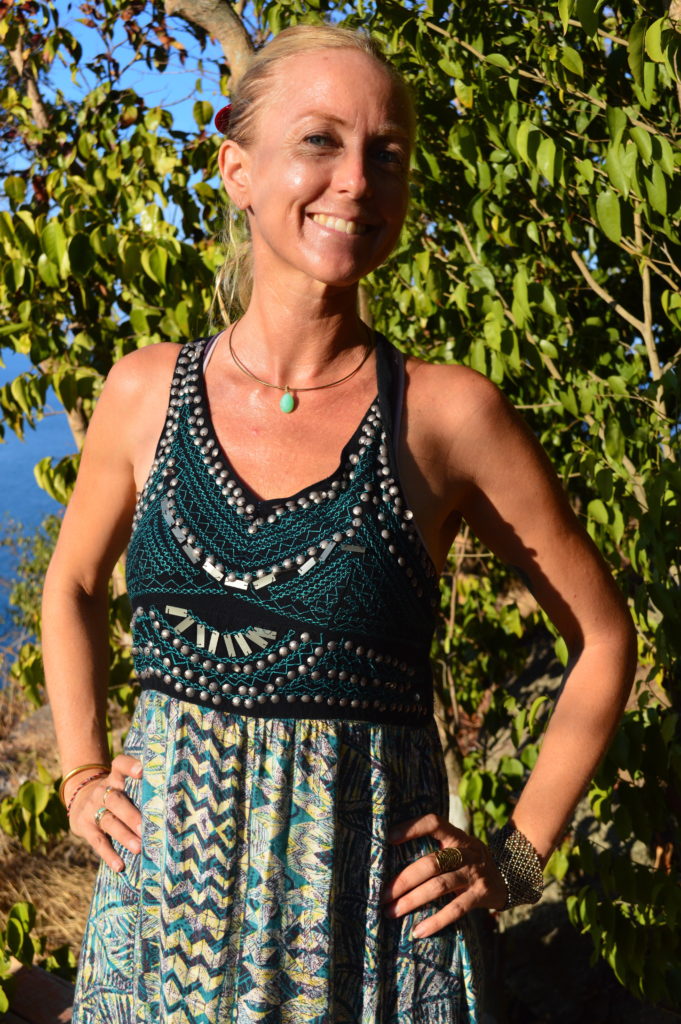
© Josephine Chan
xx
xx
Kirsten, how did yoga get into your life?
When I was a kid in the Seventies, I lived in Berkeley, and there was a lot of yoga going on. There was India happening on every street corner: we went to eat with the Hare Krishnas at their temple, and my mother went to a few yoga classes as well – to which she took me along. So I was familiar with it and even then I knew I was going to go to India and study yoga. As a teenager, I got into India’s art history and religious imagery, which fascinated me.
I also had an aunt who was clairvoyant. She could see things in the future: real, factual stuff that usually happens in reality. I wanted to learn what the basis of her psychic abilities was and with yoga, you could learn to understand consciousness and learn how to control it. I was sure that one day I was going to go to India and see what was there for me. I just figured it would be there for me, I didn’t even know why – which makes it sound very romantic, like “1001 Arabian Nights” or something (laughs).
When did you finally make it to the land of your dreams?
When I was 24, I had a few yoga classes there that appealed to me and I got into meditation which I continued after returning to the US, and I tried different styles of yoga. It took a few years until I found something that really resonated with me and went to India again in 1996 with enough money and a one-way ticket.
I went to Rishikesh and worked very briefly with a teacher named Clive Sheridan who is not an Ashtangi, but I found him to be very inspiring because of his kind and inviting manner, his personal history, and his way of studying one-on-one with a few yogis. He also had spent some time in isolation doing his self-studies. There wasn’t this sense of the chasm between teacher and student with him. But he didn’t give regular classes, he would only teach periodically.
However, whilst being in Rishikesh, I met someone who had been to Mysore and she showed me the (Ashtanga primary series; ed.) sequence. And I noted it because I was still looking for a style that suited me. So I knew one of these days I would check out Mysore because the idea of a self-directed practice appealed to me. The breathing, the fluidity, and the internal aspects of it sounded interesting. Then I went to Goa and ran into Rolf Naujokat who is an Ashtangi I had a class with and immediately knew that this was the style that I wanted to do. Seven months later I went to Mysore and began studying with Pattabhi Jois.
Are you one of the first women to have entered the advanced series?
I am one of the female teachers in the third generation if you will. The first generation has been the ‘old hippies’ like Nancy Gilgoff and then there’s the second generation with John Scott, Hamish Hendry, and Rolf. The third generation would be people like Mitchell and me. There are quite a number of women in Ashtanga Yoga who had already started the advanced series before me, but there haven’t been that many who have studied it with Guruji (Sri K. Pattabhi Jois).
xx
xx
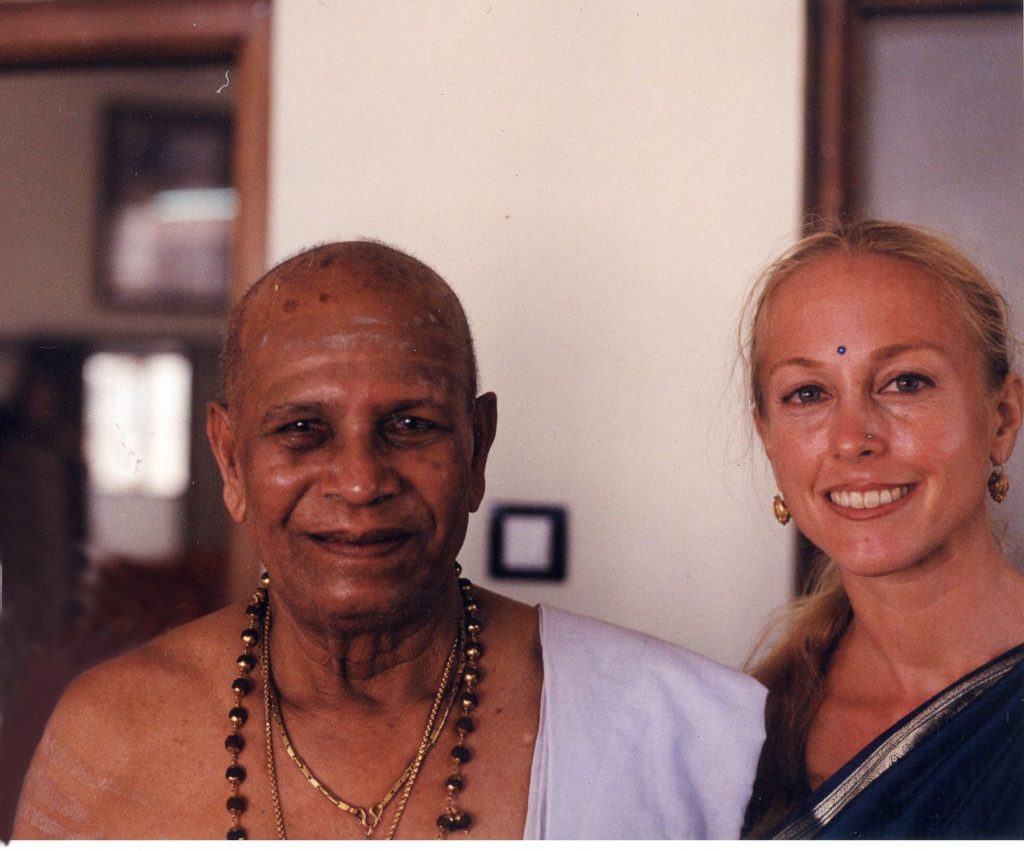
© ashtangasphere.com
xx
xx
How has yoga changed you over the years?
Sometimes it’s hard to know if it is yoga or life, you know (laughs). Through the yoga and experiences in my life related to my practice, I have found the awareness of the breath and the control of it to be incredible tools for changing your consciousness and the physical, mental and emotional response to life and situations you find yourself in. I am not as quick to react anymore to unpleasant external influences because you slowly learn to cultivate a sense of observing, tolerance and detachment. I have profited from that in my practice as well as off the mat. Just like the poses that take you into phases of comfort and discomfort, you learn to deal with moments in life through breath and mindfulness.
xx
Footage from 1938 of a yoga demonstration by Sri Tirumalai Krishnamacharya, the father of modern yoga.
xx
How often do you get to do yoga these days and what does your practice entail?
I try to do a six-day practice and I have a regular sitting meditation practice. I also make myself practice my art: There is inspiration, a vision that presents itself. It really is like yoga… you need to show up on the mat, so to speak, and put in your hand, your sketching time, so that you are there when inspiration shows itself.
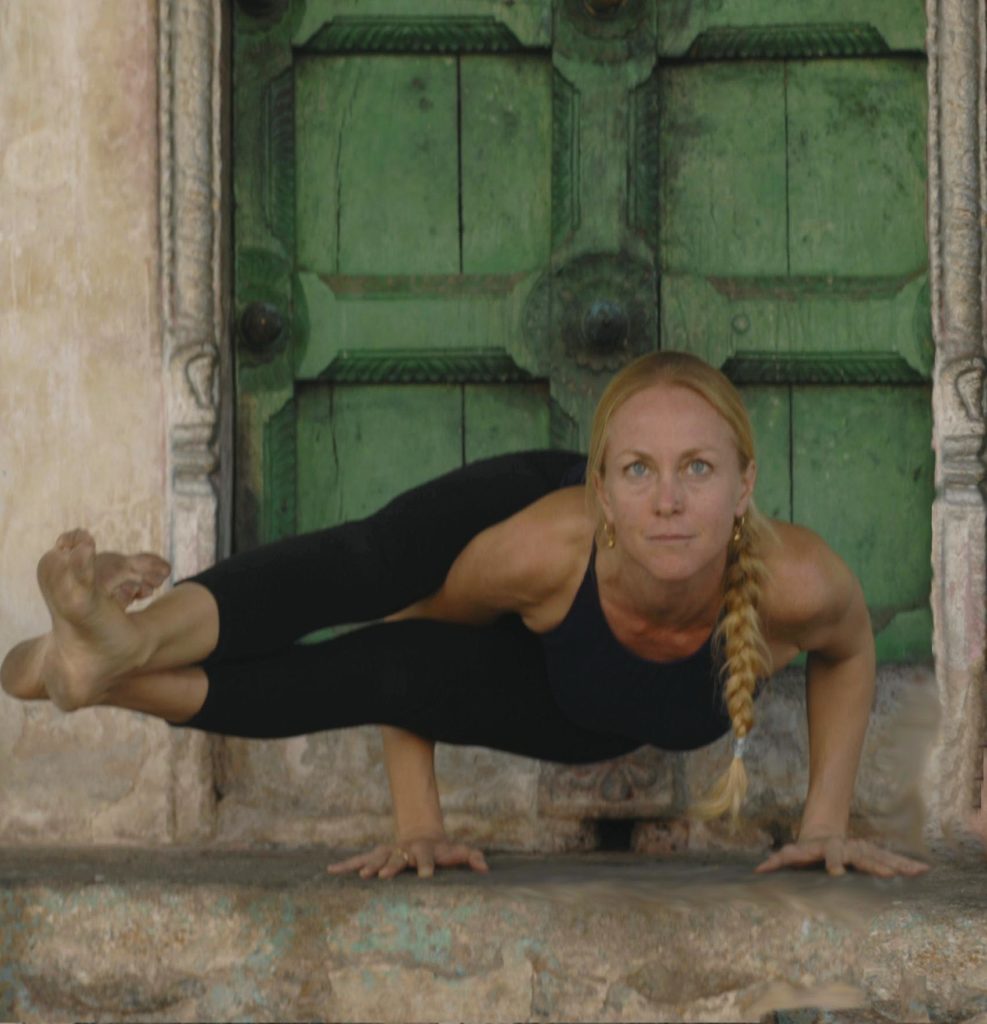
© Tom Rosenthal for ashtangasphere.com
Do you always look forward to your practice?
I don’t always look forward to it, no. Sometimes there’s a lot of resistance from the Vata part of my character that craves novelty and spontaneity and would rather spend the time daydreaming than grounding myself and putting myself through a repetitive discipline. But I have of course learned that showing up on the mat and going through that discipline is helpful in learning about that other side of myself. And, you know, sometimes you get surprises as well: You have days when you feel you don’t want to do it and then you come to the other side and you feel clear and light and energized. So, even if there’s resistance at times, it is certainly always worth it in the end.
xx
xx
“Art really is like yoga… you need to show up on the mat, so to speak, so that you are there when inspiration shows itself.”
xx
xx
Can you talk about the ups and downs of being a traveling Yogi?
Travelling affects your practice. It upsets your rhythm, as on travel days you’ll probably haven’t got the time to do your full practice. Once you are at your destination, it also takes a while until you feel you have arrived and you feel you have recentered your body. But in the long view, I don’t see that as such a big deal if you miss a few days. You’ve got your whole life to practice.
Is there an asana that you look forward to when starting out, or one that you particularly struggle with?
There is an asana in the third series called Eka Pada Bakasana which I find difficult to hold and keep my breath smooth and steady at the same time. So, I’m not a huge fan of that asana. And then I pretty much like everything else: Pincha Mayurasana I enjoy, as well as Karna Pidasana, and all the finishing poses of course. I don’t really have a strong reaction, either way, I do them and then move on – until you get to the arm balances in the third series which are super challenging, especially if you’re not naturally strong in the shoulders, which I’m not.
Can you give a tip or two to yogis and yoginis on how to keep it on the safe side, given that injuries are pretty common in Ashtanga Yoga?
Mostly you know yourself when you’re at the edge. It certainly helps to focus on the breath to steady your mind. But really you have to be able to identify if you’re on the limit of discomfort or if you have already entered into the territory of pain, and that is really a totally individual journey. The teachers are there to help you to move into places and spaces you barely knew were possible but they don’t know exactly when you’re on the edge because they don’t know your body as well as you do. So it’s up to you to pull back out of an asana before it becomes painful. You should try and develop that ability to listen to your body’s signals.
Who are your yoga heroes?
I really admire Richard Freeman’s poetic and philosophical eloquence. I also appreciate Peter Sanson, who has a very simple and humble manner, dedicated to the teachings without seeking any kind of guru status. He’s got his feet on the ground. My friend Ann Winston is struggling to keep her teachings traditional in spite of many student demands which is a tough thing in the US where Yoga studios are in competition with one another. I wouldn’t call her a hero of mine though but rather a peer I look up to and vice versa.
xx
xx
xx
“The light and the dryness of the desert heat physically make for some great practices.”
xx
xx
What are your passions apart from yoga?
I am passionate about the different approaches and ideas about consciousness which I do a lot of reading about. Finding continuous philosophical and practical inspiration in Tibetan Buddhism without necessarily having one specific teacher. Sharing experiences of the divine through yoga and creative expression. And of course, making art and connecting with people at Burning Man and feeling the connection there with nature, and with the positive possibilities of human expression.
xx
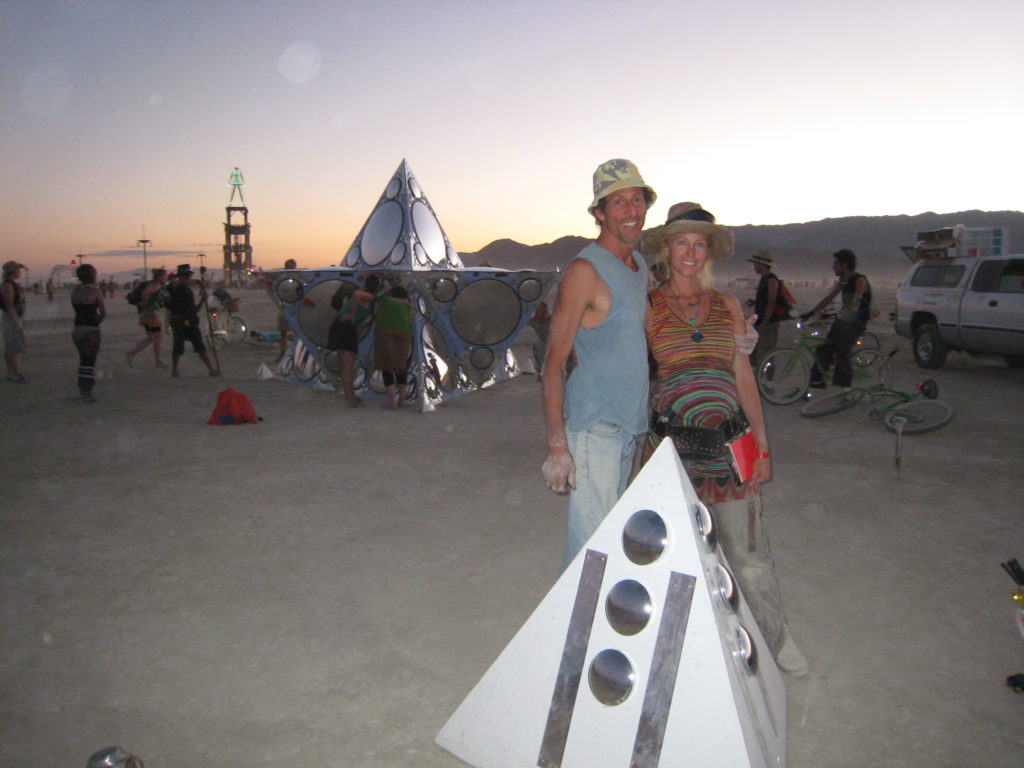
©Shawn Saleme
xx
xx
When you’re at Burning Man, do you find time to practice in the morning?
Yes, I do! And sometimes it’s not in the morning, sometimes it has to be in the afternoon. But I find it very inspiring because it is the synthesis of two things that I find very inspiring: go pick a piece of art that is also a temple space or a kind of shelter and do your practice there. And practicing on the playa is always an incredible experience: the light and also the dryness of the desert heat physically make for some great practices.
Some of your pieces of art resemble a yoga practitioner: robust and earthbound, yet stretching or aiming to higher spheres. Is there a relationship?
I think both, art and yoga are ways of looking for a connection to the divine. In art, it is sharing and expressing patterns that are seen behind the eyes and in yoga, it is a mimicry of the patterns of creation. Contraction and extension, folding and unfolding, creation and deconstruction: These are all represented in the structures that present themselves in yoga through the asanas and the breathing.
A lot of my installations have aspects of interconnectedness. That is what you see and don’t see and the fluidity of perspective, the shifting, and the illusion of what is real and what is not. All of the pieces have the aspect of coming out of the center and then returning to the center. Even in the static pieces, there’s a sense of movement as well – the same theme: traction and contraction, over and over. You are right: there is a rootedness and at the same time an extension toward something that is beyond our immediate grasp.
xx
xx
✺ ✺ ✺
xx
xx
xx
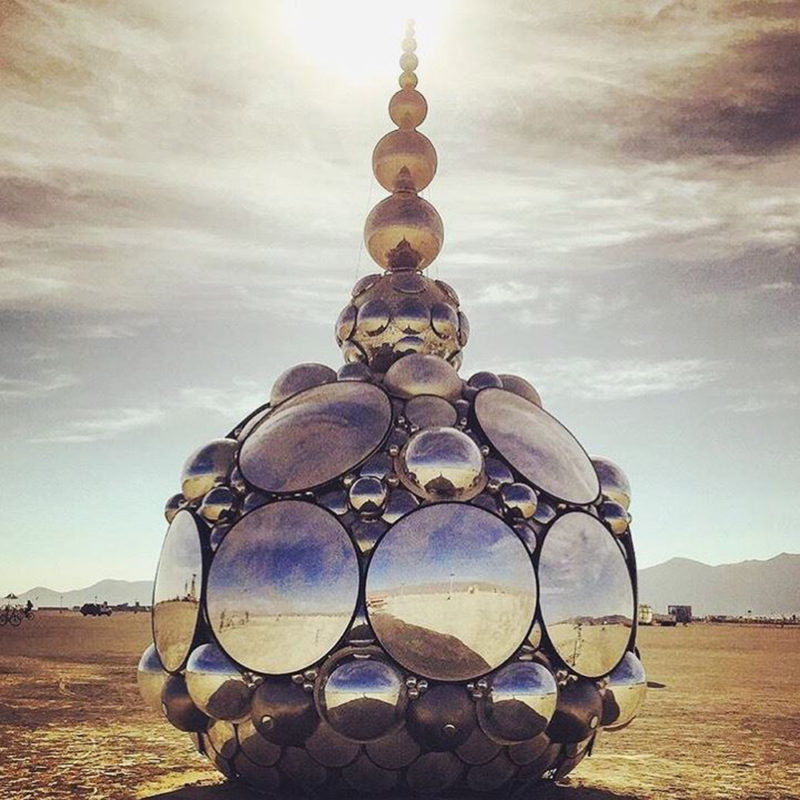
©kirstenberg.com
xx
xx
xx
www.ashtangasphere.com
www.kirstenberg.com
This interview is part of a series of interviews, called The Modern Yogi, by Josephine Chan and myself.
xx
xx
✺